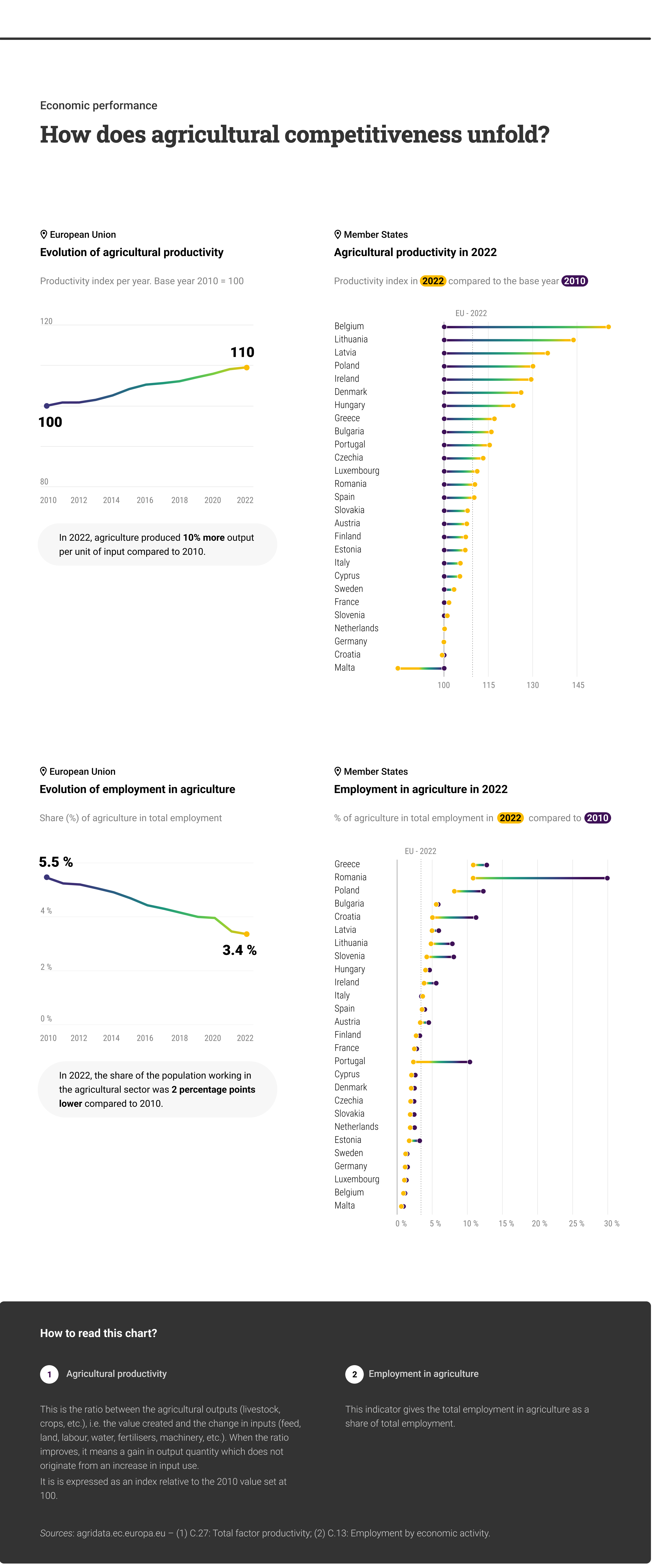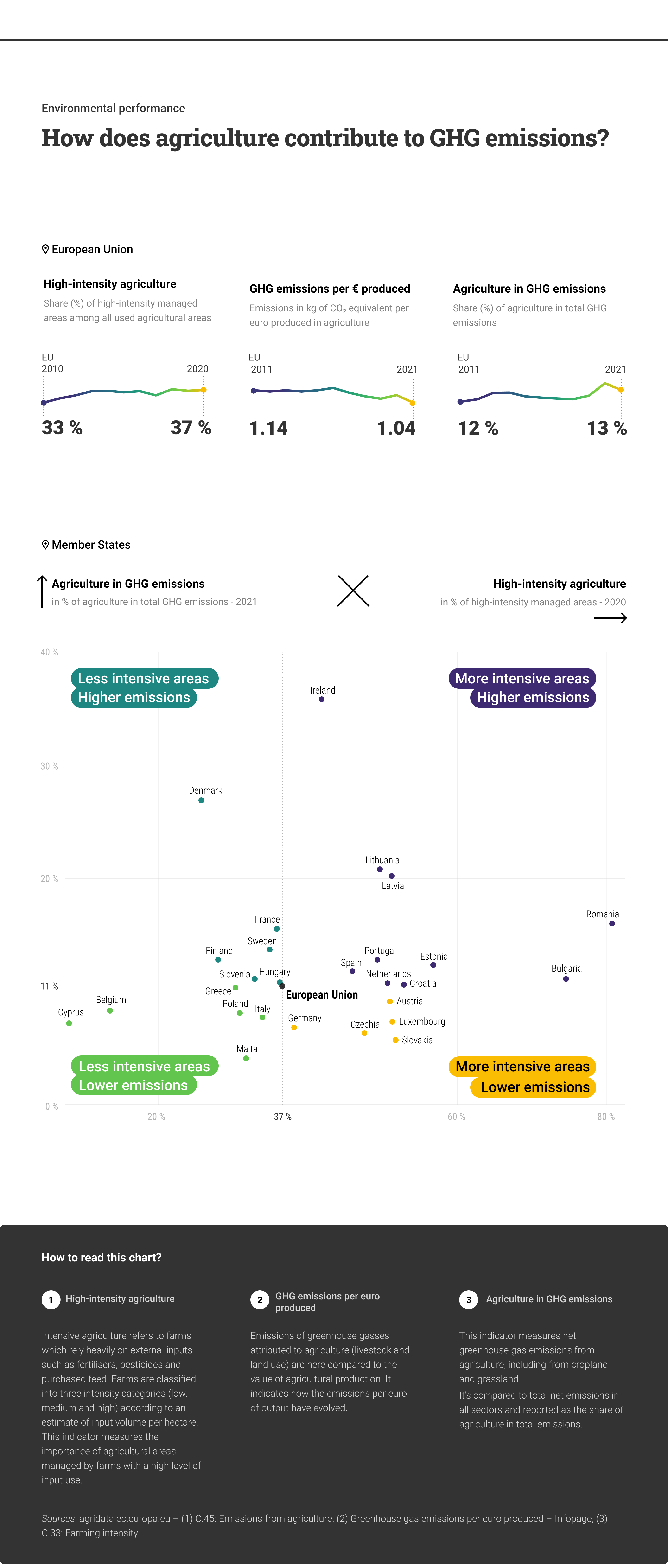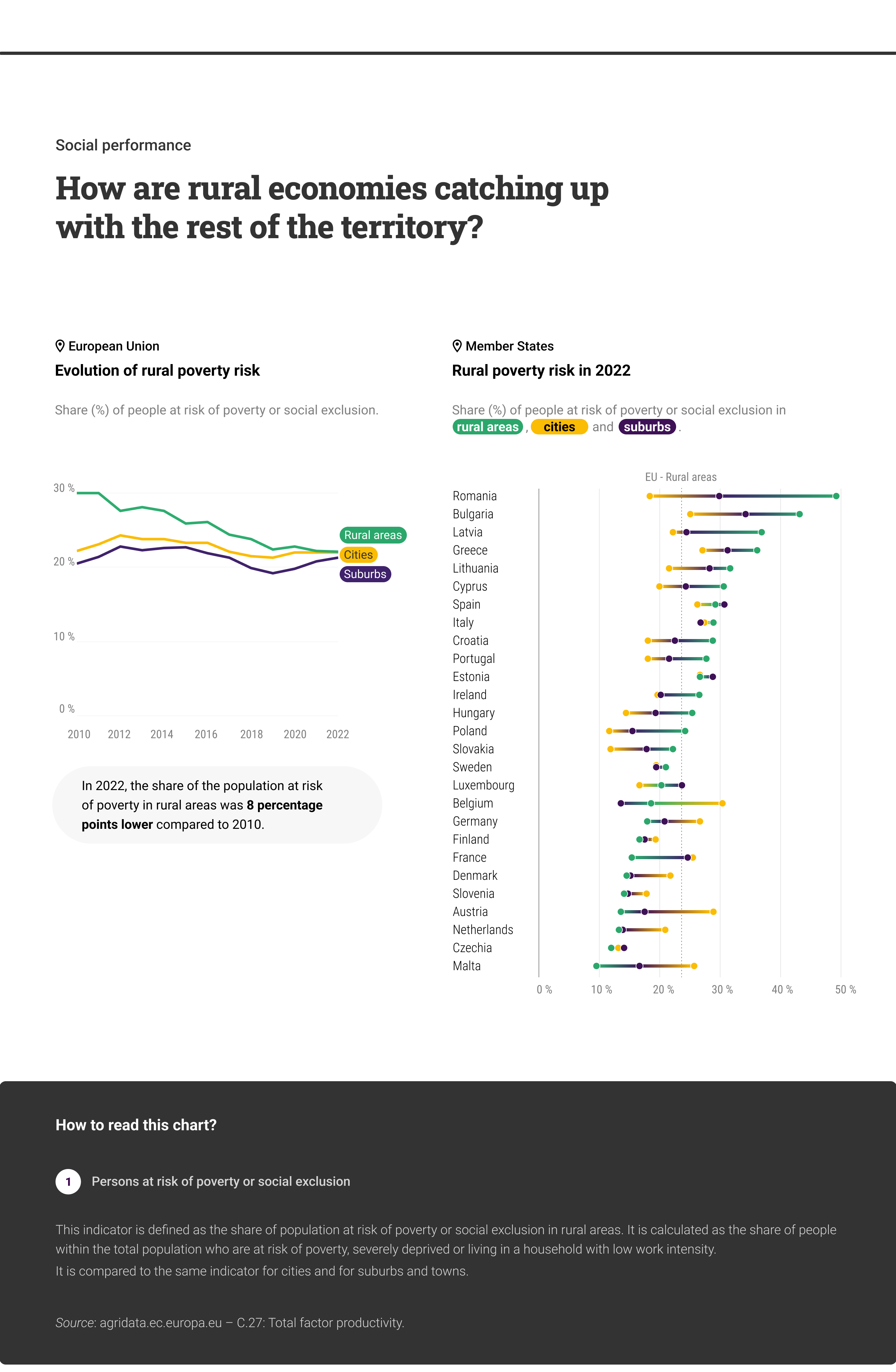Open data to understand rural development in the EU
Open datasets provide insights into the competitiveness, sustainable management, and territorial development of rural economies and communities
In the EU, agriculture and rural development encompasses the policies and practices that support farmers, food security, the environment, and rural areas. Many of these initiatives are established under the Common Agricultural Policy (CAP), which is the oldest policy in the EU, first introduced in 1962.
The CAP represents a partnership between agriculture and society, as well as between Europe and its farmers. As key focus areas, it aims to support the economic and environmental sustainability of agriculture and ensure the vibrancy and resilience of rural regions. The CAP specifically contributes to rural development through three long-term objectives focused on (1) fostering competitiveness of agriculture and forestry, (2) ensuring the sustainable management of natural resources and climate action, and (3) achieving a balanced territorial development of rural economies and communities.
This data story dives into the three objectives for rural development under the CAP, explaining the purpose of the objectives and illustrating how open data can be used to understand the state of play, make informed decisions, and track progress within the context of agricultural and rural development.
Fostering competitiveness of agriculture and forestry
The first objective within the rural development pillar of the CAP is fostering the competitiveness of agriculture and forestry. In this context, improving competitiveness refers to improving farmers' bargaining power, aligning market supply with demand in Europe and beyond, and having financial reserves in place to cope with future crises.
One way to understand competitiveness is to examine productivity metrics available as open data. Agricultural productivity is the ratio between agricultural outputs such as livestock and crops and agricultural inputs such as feed, fertiliser, labour, and so on. Figure 1 shows that agricultural productivity in the EU increased by 10 percentage points between 2010 and 2022. Member States that have increased their agricultural productivity the most in 2022 compared to 2010 include Belgium, Lithuania, and Latvia. Over the same period, the agriculture sector’s share of the total employment decreased by an average of a 2-percentage points.

Figure 1: The change in agricultural productivity and the share of total employment in the agricultural sector between 2010 and 2022 in the EU Member States (source: DG AGRI)
Ensuring the sustainable management of resources and climate action
The next objective aims to foster sustainable development and climate action. Agriculture has an impact on the climate. For example, the use of soils, trees, plants, biomass and timber (all of which are examples of carbon sinks) is responsible for both emitting and absorbing carbon dioxide (CO2) from the atmosphere (read our data story about land use in the EU). Moreover, non-CO2 greenhouse gas emissions (GHG), especially nitrous oxide (N2O) and methane (CH4), are released by agricultural activity.
Open data is a rich resource for understanding climate-related questions (read also our data story on the green transition). For example, the European Environment Agency has collected data about GHG emissions from agriculture in the EU. Figure 2 shows that land area in the EU used for high-intensity agriculture has increased by 3 percentage points between 2010 and 2020. However, the share of GHG emissions attributable to the agriculture sector rose by only 1 percentage point to 13% of the total GHG emissions over a similar period. In addition, in the majority of EU Member States less than 20% of GHG emissions come from agriculture regardless of the share of land used for high-intensity agriculture.

Figure 2: Agricultural intensity and greenhouse gas emissions in the EU Member States (source DG AGRI)
Achieving balanced territorial development of rural economies and communities
The third objective for rural development under the CAP is the balanced development of EU rural areas. This means enabling rural areas to make the most of their potential and supporting them in facing demographic change, the risk of poverty and limited access to services. An evaluation of the CAP’s impact on the territorial development of rural areas in 2021 found that CAP measures contributed to almost 50% of farm income in the most marginal and remote areas and to farm modernisation and productivity growth.
Open data can provide insights into the risk of poverty and social exclusion in rural areas. Figure 3 shows that the share of persons at risk of poverty and social exclusion in rural areas decreased on average in the EU by 8-percentage points between 2010 and 2022, from 30% down to 22%. In 2022, the share of persons at risk in rural areas converged with the share of persons at risk in cities and suburbs. Nonetheless, the share of persons at risks in rural areas, cities, and suburbs varies across EU Member States. For example, persons in rural areas in Romania face a greater risk than persons in Romanian cities, whereas the opposite pattern is observed in Malta.

Figure 3: Persons at risk of poverty and social exclusion as a share of the population in rural areas, cities, and suburbs in the EU Member States (source: DG AGRI)
Conclusion
As the EU advances in its ambitions for the agricultural sector and rural areas, open data can aid informed decision-making and policy evaluation that fosters competitive, sustainable, and balanced rural economies and communities. This is possible because open data is a rich resource that brings insights across several domains of interest. Open data tells us about economic variables, such as the converse trends of productivity and employment in the agricultural sector. Furthermore, open data reveals information about the environment, for example the consistent contribution of the agricultural sector to GHG emissions despite a corresponding increase in agricultural intensity. And on social factors, open data shows that the risk of poverty in rural areas is decreasing to levels observed in other areas in a country.
Are you wondering what the agricultural sector looks like in your country, or would you like to assess other indicators of rural development? Then dive into the open datasets on data.europa.eu to uncover more intriguing insights! Stay tuned for our next data stories and webinars by subscribing to our newsletter and following data.europa.eu on social media.
